Chiropractic Adjustment in Mexico
Search and Compare the Best Clinics and Doctors at the Lowest Prices for Chiropractic Adjustment in Mexico

Find the best clinics for Chiropractic Adjustment in Mexico
No pricing info available
Singapore offers the best prices Worldwide
Price: $ 44
MKSpinehealth, located in Diego Rivera, Tijuana, Mexico offers patients Chiropractic Adjustment procedures among its total of 23 available procedures, across 1 different specialties. Currently, there's no pricing information for Chiropractic Adjustment procedures at MKSpinehealth, as all prices are available on request only. All procedures and treatments are undertaken by the lead specialist at the Hospital, and they have multiple recognized accreditations, including: CMOT - Consejo Mexicano de Ortopedia y TraumatologíaCMT - Colegio Medico de Tijuana
- Home
- Mexico
Compare Before & After Photos of _procedure_photos.phpChiropractic Adjustment
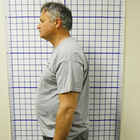
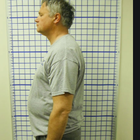
Full-side view
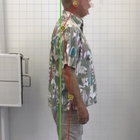
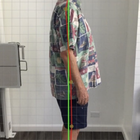
Full-side view
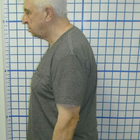
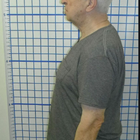
Full-side view


Full-side view
WHY US?
At Medijump, we're making medical easy. You can search, compare, discuss, and book your medical all in one place. We open the door to the best medical providers worldwide, saving you time and energy along the way, and it's all for FREE, no hidden fees, and no price markups guaranteed. So what are you waiting for?

Free

Best Price

Widest Selection

Risk-Free
What you need to know about Chiropractic Adjustment in Mexico

A chiropractic adjustment, also known as spinal manipulation, is a procedure that is performed to improve spinal motion and enhance the body’s physical function by bringing the bones of a joint back to their normal, natural position. The procedure is performed by trained specialists (chiropractors) who use their hands or a small instrument to apply a controlled, sudden directional thrust into a spinal joint. Besides chiropractors, physical therapists and osteopathic physicians may be trained and licensed to perform chiropractic adjustment as well.
Some of the most common conditions for chiropractic adjustment are low back pain, neck pain, and headache.
What is the cost of Chiropractic Adjustment in Mexico?
Several variables, including the intricacy of the patient's illness, the chiropractor's experience, and the location of the clinic, can have a considerable impact on the price of the Chiropractic Adjustment in Mexico. Budgeting for this treatment must take these things into account. Despite the cost, keep in mind that this is a safe, all-natural therapy option that could spare you from needing to undergo costly procedures or take prescription medication for an extended period of time.
What does a Chiropractic Adjustment Procedure Involve?
During a chiropractic adjustment, you will lie down on a specifically designed chiropractic table so the chiropractor can administer treatment. Your position on the table can vary depending on your problem or diagnosis. Most often, the chiropractor will ask you to lie face down. The chiropractor will use their hands to apply a controlled, directional force to a joint. This movement is designed to push the joint beyond its usual range of motion. You may hear cracking or popping sounds as your joints are moved by the chiropractor during a treatment session.
How Long Should I Stay in Mexico for a Chiropractic Adjustment Procedure?
A typical Chiropractic Adjustment session takes around 30 minutes to an hour, depending on the complexity of the condition being treated. Since the procedure is non-invasive and has a minimal recovery period, you can leave the clinic immediately after the session. A chiropractic adjustment may require a series of visits, usually around 6 to 10 visits until you attain maximum improvement. You can travel to Mexico multiple times for each visit, or you can stay in the area until you complete all treatment sessions.
What's the Recovery Time for Chiropractic Adjustment Procedures in Mexico?
The recovery time varies for one person to another. In general, it is recommended that you rest for at least a day or two after each session of chiropractic adjustment, especially if you experience minor side effects, such as fatigue, headache, or pain in the parts of the body that were treated. You may also need to avoid strenuous activity until your condition is fully healed. Your chiropractor will give you a detailed recovery timeline.
What sort of Aftercare is Required for Chiropractic Adjustment Procedures in Mexico?
While receiving a Chiropractic Adjustment doesn't necessitate a specific aftercare routine, following certain guidelines can amplify its benefits and support overall. Your chiropractor will give you specific aftercare instructions which may include:
-
Drink plenty of water. Keep drinking more than the normal amount for several days to keep your body properly functioning and healthy.
-
Keep moving. Avoid sitting for long periods of time and try going for a long walk or take a bike ride. If you need to go back to work, it is best that you utilize a standing desk.
-
Move carefully. While you need to stay active, you should not overdo it.
-
Do the exercises that your chiropractor gives you.
What's the Success Rate of Chiropractic Adjustment Procedures in Mexico?
According to the National Center for Complementary and Integrative Health (NCCIH), chiropractic adjustment has been proven to provide relief for mild and moderate low back pain. The success rate of Chiropractic Adjustment is quite high, with studies showing approximately 80% of patients experience relief from their symptoms. Many patients in Mexico have reported significant improvements in their health, mobility, and quality of life after receiving chiropractic adjustments. Keep in mind, however, that success rates can vary depending on the individual's health conditions and how they respond to the treatment.
Are there Alternatives to Chiropractic Adjustment Procedures in Mexico?
Massage therapy, exercise, and physical therapy offer similar results to chiropractic adjustment. Other alternatives to chiropractic adjustment include painkillers, spinal fusion surgery, or nerve treatment.
It's important to remember that what works best vary from person to person, and sometimes a combination of treatments is most effective. Make sure to consult your doctor for the best treatment for your specific case. Your health should always be the top priority, and there's no one-size-fits-all solution to any condition.
What Should You Expect Before and After the Procedure
Before the Chiropractic Adjustment, your chiropractor will perform a comprehensive assessment to understand your health condition better. This includes a physical examination, medical history review, and possibly, imaging tests. Understanding your Health Conditions and issues in depth helps the chiropractor to customize a treatment plan that suits your needs.
After the procedure, it's common to feel some immediate relief. However, some patients might experience minor side effects, such as discomfort in the treated area, headaches, or fatigue. These symptoms usually go away within a few hours or days. Your condition will likely improve, the pain should disappear, and you will feel reenergized. Generally, a successful chiropractic adjustment will improve your quality of life
What are the Potential Risks of Chiropractic Adjustment?
Overall, the procedure is considered safe. Minor and temporary side effects (headache, sore joints, dizziness, fatigue) occur in 23% to 83% adult patients. Serious risks that can be debilitating are very rare, ranging from 1 per 2 million adjustments and 13 per 10,000 patients. These serious risks include:
-
Spinal cord injury
-
Spinal disk injury
-
Stroke
-
Cauda equina syndrome.
Can children and teens receive Chiropractic Adjustment?
Indeed, youngsters and adolescents can securely undergo Chiropractic Adjustment. Chiropractic care is experiencing heightened popularity as a precautionary healthcare approach amongst budding populations, serving as a boon to their developing bodies while fostering salubrious habits. This treatment can assist with posture-related concerns, sporting traumas, back and neck discomfort, and events extend to conditions like asthma and ear infections.
Is Chiropractic Adjustment safe for pregnant women?
Yes, it is widely recognized that expecting women can safely undergo chiropractic adjustments. Numerous pregnant women seek chiropractic care to address common discomforts like sciatica and backaches. It can expedite labor and childbirth duration, manage nausea symptoms, sustain a healthier pregnancy, and potentially prevent a caesarean delivery. Nonetheless, it's indispensable to always consult with your doctor prior to undergoing any medical treatments during pregnancy.
The techniques used by chiropractors while administering adjustments on pregnant patients are designed to avoid abdominal pressure. They also provide secure and beneficial prenatal exercises and stretches. To ensure the safest and most effective treatment, it's crucial to furnish your chiropractor with a precise and thorough medical history, inclusive of details pertaining to your pregnancy.
Whilst the information presented here has been accurately sourced and verified by a medical professional for its accuracy, it is still advised to consult with your doctor before pursuing a medical treatment at one of the listed medical providers
No Time?
Tell us what you're looking for and we'll reachout to the top clinics all at once
Enquire Now

Popular Procedures in Mexico
Prices Start From $400

Prices Start From $21

Recommended Medical Centers in Mexico for Chiropractic Adjustment

- Interpreter services
- Translation service
- Religious facilities
- Medical records transfer
- Medical travel insurance
- Health insurance coordination
- TV in the room
- Safe in the room
- Phone in the room
- Private rooms for patients available

- Interpreter services
- Translation service
- Religious facilities
- Medical records transfer
- Medical travel insurance
- Health insurance coordination
- TV in the room
- Safe in the room
- Phone in the room
- Private rooms for patients available

- Interpreter services
- Translation service
- Religious facilities
- Medical records transfer
- Medical travel insurance
- Health insurance coordination
- TV in the room
- Safe in the room
- Phone in the room
- Private rooms for patients available

- Interpreter services
- Translation service
- Religious facilities
- Medical records transfer
- Medical travel insurance
- Health insurance coordination
- TV in the room
- Safe in the room
- Phone in the room
- Private rooms for patients available

- Interpreter services
- Translation service
- Religious facilities
- Medical records transfer
- Medical travel insurance
- Health insurance coordination
- TV in the room
- Safe in the room
- Phone in the room
- Private rooms for patients available

- Interpreter services
- Translation service
- Religious facilities
- Medical records transfer
- Medical travel insurance
- Health insurance coordination
- TV in the room
- Safe in the room
- Phone in the room
- Private rooms for patients available

- Interpreter services
- Translation service
- Religious facilities
- Medical records transfer
- Medical travel insurance
- Health insurance coordination
- TV in the room
- Safe in the room
- Phone in the room
- Private rooms for patients available

- Interpreter services
- Translation service
- Religious facilities
- Medical records transfer
- Medical travel insurance
- Health insurance coordination
- TV in the room
- Safe in the room
- Phone in the room
- Private rooms for patients available
Chiropractic Adjustment in and around Mexico
About Mexico
The Country of Mexico forms a part of the North American continent and lies directly south of the United States and is the fifth largest country in the Americas. It comprises 31 states and a Federal District. The capital of Mexico City lies in the Federal District. Mexico is dominated by several mountain ranges and the more well-known ones are the Sierra Madre Oriental and the Sierra Madre Occidental. It is famous for its amazing beaches, and the best-known Latin American pyramids include the Pyramid of the Sun and the Pyramid of the Moon at Teotihuacán in central Mexico,
Mexico ranks among the top five locales for medical tourism worldwide, consistently attracting those seeking not only medical care but luxurious, boutique-styled facilities for recovery as well. The distinct appeal to choosing Mexico as a destination for medical procedures is not solely based on the accommodation standards, but also the notably lower costs contrasted with those in the United States. With a price tag that usually amounts to 70-80% less than what you'd expect to pay in the US for the same procedure, it's no wonder why Mexico is such an attractive option for medical tourists.
In terms of the economic value, medical tourism in Mexico has proven to be no small industry. According to the data gathered in 2016, the industry is worth a whopping $4.8 Billion. Moreover, it is not an underused resource, as can be seen in the influx of medical tourists that the country welcomes each year. An astonishing 1 million individuals travel to Mexico annually, seeking different varieties of treatments and procedures.
Geographically, it's noted that the majority of these medical tourists hail from nearby US states. In fact, states that border Mexico, such as California, Texas, and Arizona, make up approximately 70% of the medical tourists that arrive in Mexico.
Tijuana, Cancun, Mexicali, and Monterrey are some of the more popular cities in Mexico for medical tourism and the flowing procedures:
- Dental treatments including dental surgery
- Plastic and Cosmetic Surgery
- Bariatric Surgery
- Other medical procedures like dermatology, orthopedics, gynecology, and ophthalmology.
Popular Parts of Mexico
Six Cities in Mexico that should be on your itinerary:
- Mexico City – This enormous capital city is the most populous city on the North American continent. The metropolitan area of the city is home to a staggering 21.2 million people. El Zocalo, the main public square is a famous landmark in Mexico City. It is also a UNESCO World Heritage site.
- Cancun –Is a major resort city with turquoise blue waters and striking white sandy beaches. It has a population of about 628,000 people. You can take day trips to the Mayan ruins, the unspoiled jungle habitats of Coba, and Chichen Itza from Cancun.
- San Miguel de Allende –Is one of the most popular cities in Mexico. The must-visit sites in this city are the San Miguel Arcangel Parish, the archaeological zone of Canada la Virgen, and the handicraft market.
- Guadalajara – It’s the second largest city in Mexico and has a population of 5.1 million. The city has a more relaxed feel and a distinctly Mexican flavor. The historic center is impressive with a cathedral and colonial architecture. Guadalajara Cathedral, Instituto Cultural de Cabanas, and the Expiatory Temple are famous sights to visit.
- Oaxaca – Is a southern Mexican city and is situated in a valley. It is home to 4.2 million inhabitants. Oaxaca Cathedral, Zocalo and Mercado Benito Juarez, and The Rufino Tamayo Museum are a few of the interesting places to see in this city.
- Tijuana – Is a border city in Mexico and shares its border with California. Because of its location, this city is very popular with American medical tourists. The Avenida Revolucion is the main street and is lined with Bars and Restaurants. Popular landmarks include Jai Alai Fronton Palace, Centro Cultural Tijuana, and Estadio Caliente. It has a population of 1.3 million people.
Other important cities are Merida, Acapulco, Puebla City, Taxco Puerto Vallarto, and Playa del Carmen.
Weather and Climate in Mexico
Mexico, in its vastness, doesn't possess a uniform climate throughout the nation. Various regions exhibit distinct weather patterns, which are inextricably linked to their geographical features. Given Mexico's immense size, it's unsurprising that the climate varies significantly across different locations. The periodic patterns across the nation are not homogenous, as one would expect in a smaller, less diverse country. Instead, Mexico’s topography, which is incredibly varied, heavily influences the country’s diverse weather and climate.
In terms of seasonality, Mexico traditionally experiences two major seasons - the rainy season and the dry season. Each of these seasons presents its own unique set of conditions and weather patterns, shaping the climate across the country in distinctive ways. The shifts between these periods of rain and periods of drought are quite pronounced, showcasing the climatic dualism that shapes the Mexican landscape. This cyclical pattern of rainy and dry seasons is a key part of Mexico's climatic identity, having profound effects on both its environment and the livelihood of its inhabitants.
- Rainy Season – Most of Mexico experiences rain from May to September or October. The weather is hot and humid in these months, especially in Southern Mexico. The average temperature in the summer months is around 83 degrees Fahrenheit. In winter, the temperature averages between 68- and 74 degrees Fahrenheit.
- Dry Season – October to May there is hardly any rain and it happens to be the most popular time to visit Mexico. During the winter months of December to February, the non-coastal regions have cold weather. At times, it reaches freezing temperatures. June to November is the hurricane season and hence it is better to avoid traveling during this time.
Getting Around in Mexico
The easiest way to reach Mexico is through Mexico City International Airport, which is also referred to as Benito Juarez International Airport, which is the busiest airport in Mexico. The airport links 52 domestic cities and 50 international destinations in Latin America, North America, Europe, and Asia. Aeromexico is the largest carrier serving many Latin American cities, domestic and international cities. Other prominent Mexican airlines are Interjet, Volaris, and Aeromar. Major American carriers like United Airlines, American Airlines, and Delta Air also operate flights to Mexico City.
For travel within Mexico, air travel is the best mode considering the vast size of the country. Budget airlines like Avolar, Azteca, Interjet, vivaAerobus, and Volaris offer competitive and cheap airfares for domestic travel.
You can navigate between cities via local buses and rental cars, making the journey a part of your Mexican adventure. However, for a quicker commute, the metro system prevails as the fastest mode of transport. This web of fast trains bridges the gap between major cities including Mexico City, Guadalajara and Monterrey, ensuring convenient and expedient transportation.
Navigating through Mexico City is fairly simple and cost-effective, courtesy of its inexpensive public transport system. You can choose from a variety of transport modes, including the Metro, first and second-class buses, colectivos, and Nissan Tsuru libre taxis.
However, if you prefer sitio taxis, it is advised not to hail one from the street after dark for safety reasons. Furthermore, for those not fluent in Spanish or unfamiliar with the city's layout, it is highly recommended to use taxis from Taxi Ranks, ensuring a smoother and more secure journey.
Tourist Visas in Mexico
Traveling to Mexico as a tourist, you need to apply for and get a tourist visa well in advance. Your passport must be valid to cover at least three months beyond the duration of your visa. A Mexican tourist visa is for a single entry and is valid for only six months. You should travel within 90 days of the visa being issued.
Mexico has a waiver for the tourist visa requirement for the citizens of 67 countries including the USA, European Union, Latin America, and Australia. Under this privilege, you can visit Mexico for a period of 30 to 180 days without a tourist visa. However, you need to get an online Electronic Authorization before traveling to Mexico.
Nationals of Russia, India China and a few other countries need to get a visa in advance before entering Mexico.
Additional Information
- The currency of Mexico is Peso and has a $ symbol like the US Dollar. So, MXN is an alternative symbol to avoid confusion. Shopkeepers accept US dollars but refuse Euros. The conversion rate of a US dollar to Mexican Peso is 17.97 as of Mexico 2023.
- You can use debit and credit cards within city limits in Mexico, but many retailers levy a surcharge for credit cards. Small shopkeepers insist on cash. ATMs are present everywhere and have bilingual options with English as a choice.
- Spanish is the first and the main language spoken in Mexico. People also speak English in tourist areas and along the Northern border. However, it is always better to learn a little Spanish when you travel to Mexico.
- Mexico does not have a national religion, but Roman Catholicism is a major faith.
- Constitution Day (Feb 4), Benito Juarez’s Birthday (Mar 18), Independence Day (Sep 16), Revolution Day (Nov 18), and Christmas (Dec 25) are some of the statutory public holidays in Mexico.
Popular Searches
- Plastic Surgery in Thailand
- Dental Implants in Thailand
- Hair Transplant in Thailand
- Breast Augmentation Thailand
- Gastric Sleeve in Thailand
- Gender Reassignment Surgery in Thailand
- Laser Hair Removal in Bangkok
- Botox in Bangkok
- Dermatology in Bangkok
- Breast Augmentation in Bangkok
- Coolsculpting in Bangkok
- Veneers in Turkey
- Hair Transplant in Turkey
- Rhinoplasty in Turkey
- Stem Cell Therapy in Mexico
- Rhinoplasty in Mexico
- Liposuction in Mexico
- Coolsculpting in Tijuana
- Rhinoplasty in Korea
- Scar Removal in Korea
- Gastric Sleeve in Turkey
- Bone Marrow Transplant in India
- Invisalign in Malaysia
- Plastic Surgery in the Dominican Republic
- Tummy Tuck in the Dominican Republic
- Plastic and Cosmetic Surgery in Poland
- Rhinoplasty in Poland
- Hair Implant in Poland
- Dental Implants in Poland
- IVF in Turkey